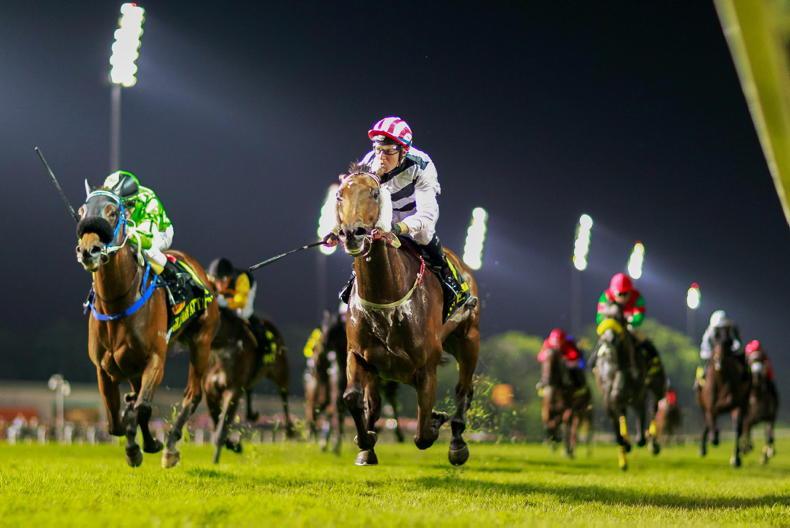DANNY Murphy and Declan McDonogh were both saddened to hear that racing in Singapore will be shut down at the end of next year. The country’s government will take back the 120-hectare site at Kranji Racecourse, which will be used for public and private housing.
Murphy trained there for five years in the early 2000s and won the country’s biggest race, while McDonogh had a stint in Singapore in 2011.
Murphy said: “Singapore is an absolutely beautiful country and I loved it there. The prize money was great and I was fortunate enough to win their biggest race, the Gold Cup, with a horse I owned myself, Terfel. It was S$700,000 to the winner.
“Unfortunately once the casinos opened up they took over from the racing. The Singapore Turf Club didn’t have a great administrator in the same mould as Winfried Engelbrecht-Bresges, the man who runs Hong Kong racing. It will be a big loss to Ireland as a good number of Irish-bred horses are sold to Singapore each year.”
McDonogh said: “I followed Fran Berry out there and I really enjoyed it. It was a very well-run operation, similar to Hong Kong and Australia, with barrier trials. It helped my race-riding.
“Singapore was very hot and humid for both humans and horses, but the horses seemed to cope well with it. Welfare was paramount, the racing surface was superb and the facilities were second to none.
“Danny Murphy was training there at the time and Joao Moreira was the leading rider. I recall Kevin Manning riding Alexander Goldrun in an international race one year. It’s sad to see it go. Unfortunately, racing in India is not thriving either.”
Irish-bred horses also made headlines in Singapore. Dunboyne Express won a Group 3 race for Kevin Prendergast in 2011 before being sold to race in Hong Kong. Renamed Dan Excel, he not only won at Group 1 level in Hong Kong but he also won back-to-back editions of the Singapore Airlines International Cup.
“Horse racing has a long and distinguished history in Singapore,” the Singapore Turf Club said in a statement late on Monday. “With races continuing until the 100th Grand Singapore Gold Cup on October 5th 2024, the Club will continue to ensure the sportsmanship, safety and integrity of every race.”
The sport was introduced to Singapore in 1842, when Scottish merchant William Henry Macleod Read and several other enthusiasts founded the Singapore Sporting Club. They transformed a patch of semi-swampland in Farrer Park in central Singapore into a racecourse.
In 1924, the site was renamed as the Singapore Turf Club.
Horse racing proved to be popular not only with Europeans, with meetings also attracting wealthy Malay and Chinese racegoers.
In 1933, as horse racing’s popularity increased on the island, the course was moved to a larger location at Bukit Timah in western Singapore.
In March 2000, the Singapore Turf Club moved to its current location at Kranji, in the north of the island.
The racecourse has a five-storey grandstand, with capacity for 30,000 spectators.
However, the Singapore Turf Club has seen attendance decline over the past decade.
The country’s government said the land would be redeveloped for public and private housing to meet “future land use needs”.
“Singapore is a city-state with limited land. The government continually reviews its land use plans to meet today’s needs while ensuring there is sufficient land for future generations,” it added.
The Ministry of National Development also said it would explore other uses for the land, including leisure and recreation facilities.


 This is a subscriber-only article
This is a subscriber-only article
 It looks like you're browsing in private mode
It looks like you're browsing in private mode





SHARING OPTIONS: